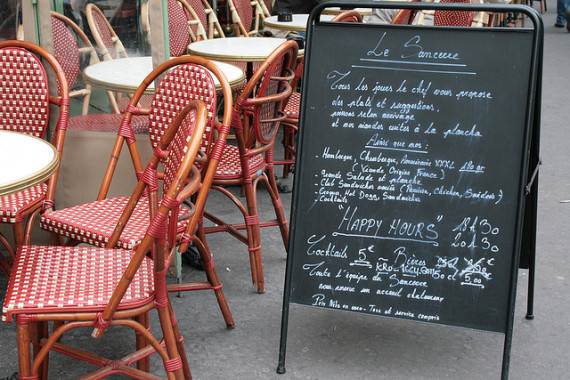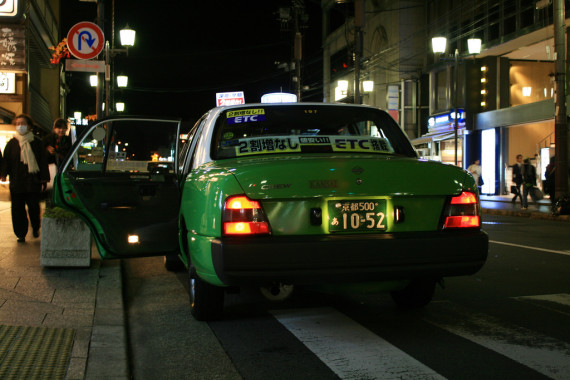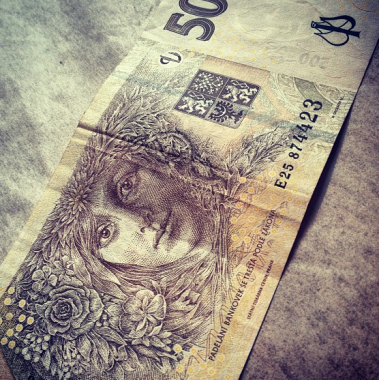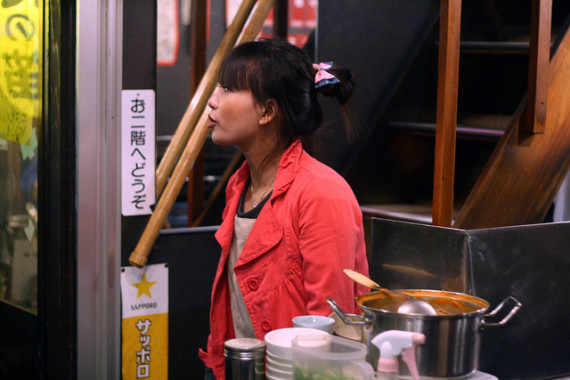Like us on Facebook
www.familytc.com
This blog post is shared by our partners, Context Travel
Anyone who has sat in the back of a taxi cab fumbling foreign currency while frantically trying to remember the right amount to tip (is it 5%? 10%? Just a few coins?) knows that it’s a good idea to research local customs around tipping before visiting a new city. It’s tempting to assume that, when in doubt, better to overtip than appear stingy, but it turns out that in some countries, this is a very bad idea. We chatted with our local experts in each of the non-North American cities where we operate to find out exactly how, and how much, it’s appropriate to tip.
Rome, Florence, Venice, and Naples
In Italy, like many other European countries, tips are appreciated but not compulsory. In most restaurants, it’s polite to leave one to two euros per person. Tips are not required in taxis, hair salons, or hotels. For an even deeper understanding, Katie Parla has a very thorough run-down on tipping customs in Italy.
In Italy, like many other European countries, tips are appreciated but not compulsory. In most restaurants, it’s polite to leave one to two euros per person. Tips are not required in taxis, hair salons, or hotels. For an even deeper understanding, Katie Parla has a very thorough run-down on tipping customs in Italy.
Paris
Fine dining establishments expect a 10-15% tip, but in regular restaurants, bistros, and cafés, one to three euros – depending on the quality of the service – is adequate. Courtney Delaunay, Parisian docent and our new France docent manager, says that gratuity for taxi drivers or porters in hotels follows the same custom – one to three euros depending on the quality of the service.
Fine dining establishments expect a 10-15% tip, but in regular restaurants, bistros, and cafés, one to three euros – depending on the quality of the service – is adequate. Courtney Delaunay, Parisian docent and our new France docent manager, says that gratuity for taxi drivers or porters in hotels follows the same custom – one to three euros depending on the quality of the service.
Madrid and Barcelona
Spain is another country where tipping is light by American standards. It’s not necessary to tip for a taxi ride or a drink in a café, although it’s acceptable to round up to the nearest euro on the bill. Like Parisian restaurants, restaurants in Spain are happy with a one to three euro tip.
Spain is another country where tipping is light by American standards. It’s not necessary to tip for a taxi ride or a drink in a café, although it’s acceptable to round up to the nearest euro on the bill. Like Parisian restaurants, restaurants in Spain are happy with a one to three euro tip.
London
Caroline Barron, longtime London docent, explains that in recent years, it has become very common for restaurants in London to automatically add service (usually 12.5%) to the bill, which most customers pay without question. There are some places, however, where a gratuity is not included, in which case customers should add 10% to the bill. She advises travelers to, “Check the bill for service, and ask if you’re not sure.”
Caroline Barron, longtime London docent, explains that in recent years, it has become very common for restaurants in London to automatically add service (usually 12.5%) to the bill, which most customers pay without question. There are some places, however, where a gratuity is not included, in which case customers should add 10% to the bill. She advises travelers to, “Check the bill for service, and ask if you’re not sure.”
In pubs, a mainstay of UK culture, tipping is very rare. Larger groups who have enjoyed a few rounds might at some point say to the bartender, “add one for yourself,” which means the server can take the price of a drink out of the tab as a tip. In very swanky bars, service will be added to the bill.
British taxi drivers do not expect large tips. Instead, it’s customary to round up the fare to the nearest pound. So, for £5.20 fare, £6 is acceptable, but for a £5.80 fare, riders should pay £7.
Istanbul
In hotels, it’s customary to give porters and chambermaids 5 to 10 TRY (Turkish Lira), which are the smallest denominations of paper currency. It’s acceptable to use foreign currency, except for coins, which are difficult to exchange. Restaurants in Istanbul expect at least a 10% tip, but this must be paid in cash – generally it’s not possible to add gratuity to the credit card bill. In taxis, there is no need to tip. With a private car service, it’s a good idea to give the driver 5 to 20 TRY depending on the number of passengers and the amount of luggage.
In hotels, it’s customary to give porters and chambermaids 5 to 10 TRY (Turkish Lira), which are the smallest denominations of paper currency. It’s acceptable to use foreign currency, except for coins, which are difficult to exchange. Restaurants in Istanbul expect at least a 10% tip, but this must be paid in cash – generally it’s not possible to add gratuity to the credit card bill. In taxis, there is no need to tip. With a private car service, it’s a good idea to give the driver 5 to 20 TRY depending on the number of passengers and the amount of luggage.
Athens
While Athenians certainly appreciate a tip, gratuity is not expected in the same way it is in the United States. In cafés, it’s not necessary to leave more than small change, while the waitstaff in most restaurants will appreciate one or two euros left on the table. In fancier establishments, 5-8% of the bill is an appropriate tip. Like Turkey, taxi drivers in Athens do not expect a tip, but with a private car service, it’s polite to give the driver one to two euros per person, more if there is a lot of luggage. Hotel bellhops will also appreciate one to two euros per person or per bag.
While Athenians certainly appreciate a tip, gratuity is not expected in the same way it is in the United States. In cafés, it’s not necessary to leave more than small change, while the waitstaff in most restaurants will appreciate one or two euros left on the table. In fancier establishments, 5-8% of the bill is an appropriate tip. Like Turkey, taxi drivers in Athens do not expect a tip, but with a private car service, it’s polite to give the driver one to two euros per person, more if there is a lot of luggage. Hotel bellhops will also appreciate one to two euros per person or per bag.
Prague
Tipping in Prague follows a simple rule of thumb: 10% of the total is appropriate for taxis, restaurants, and hotels.
Tipping in Prague follows a simple rule of thumb: 10% of the total is appropriate for taxis, restaurants, and hotels.
Vienna
Vienna follows the same customs as Prague – 10% across the board – but with a twist. Often, taxi drivers and waiters will give the total bill verbally, and then expect customers to respond with how much they would like to pay, also verbally. For example, a waiter says, “The total is €12.70,” to which the customer responds, “€14″ while handing him a €20 bill. The waiter will then return with €6 in change. Vienna docent Lisa Regan knows from personal experience that it’s best for visitors to resist the urge to panic and overtip when telling the server the total amount. Viennese servers are better compensated than their American counterparts, so a 10% gratuity is sufficient.
Vienna follows the same customs as Prague – 10% across the board – but with a twist. Often, taxi drivers and waiters will give the total bill verbally, and then expect customers to respond with how much they would like to pay, also verbally. For example, a waiter says, “The total is €12.70,” to which the customer responds, “€14″ while handing him a €20 bill. The waiter will then return with €6 in change. Vienna docent Lisa Regan knows from personal experience that it’s best for visitors to resist the urge to panic and overtip when telling the server the total amount. Viennese servers are better compensated than their American counterparts, so a 10% gratuity is sufficient.
Budapest
According to Context docent Dora Sallay, a native Hungarian, tipping in Budapest follows a different process than in many other cities, with the familiar practice of leaving tip on the table not used here. Typically customers look at the bill and quickly calculate how much they would like to add, normally 10%, less if they are unhappy with the service and more if they are exceptionally happy. Customers then tell the service provider how much they would like to pay, including tip,before paying. Therefore, in restaurants, leaving a tip on the table confuses waiters, as they do not customarily look there for tips and the may initially believe they have not been tipped for service. In other situations, (e.g. a coat check in a theater, or when you receive mail) it’s customary to give small change.
According to Context docent Dora Sallay, a native Hungarian, tipping in Budapest follows a different process than in many other cities, with the familiar practice of leaving tip on the table not used here. Typically customers look at the bill and quickly calculate how much they would like to add, normally 10%, less if they are unhappy with the service and more if they are exceptionally happy. Customers then tell the service provider how much they would like to pay, including tip,before paying. Therefore, in restaurants, leaving a tip on the table confuses waiters, as they do not customarily look there for tips and the may initially believe they have not been tipped for service. In other situations, (e.g. a coat check in a theater, or when you receive mail) it’s customary to give small change.
Shanghai and Beijing
In general, tipping is not necessary in China. The increase in the number of international visitors to China in the past decade means that a service charge may be automatically added in the more upscale hotels or restaurants, but as our Beijing docent, sinologist Jeremiah Jenne, explains, at most places “a tip is just as likely to confuse service staff as it is to be accepted.”
In general, tipping is not necessary in China. The increase in the number of international visitors to China in the past decade means that a service charge may be automatically added in the more upscale hotels or restaurants, but as our Beijing docent, sinologist Jeremiah Jenne, explains, at most places “a tip is just as likely to confuse service staff as it is to be accepted.”
Tokyo and Kyoto
While there was some discussion among our docents about exactly how rude it is to tip in Japan, the consensus was that travelers should definitely not tip. Prices in Japan already include service, so an additional gratuity is unexpected and possibly even unwelcome. As our docent Andrea de Antoni points out, service providers (i.e. a restaurant, or a taxi) are supposed to set the price at a rate that they believe to be fair. Leaving a tip, therefore, implies that the customer not only believes the price is unfair, but also that he or she is better than the person who set the price. The customer may even be perceived as attempting to humiliate the service provider with a display of superior wealth or social status.
While there was some discussion among our docents about exactly how rude it is to tip in Japan, the consensus was that travelers should definitely not tip. Prices in Japan already include service, so an additional gratuity is unexpected and possibly even unwelcome. As our docent Andrea de Antoni points out, service providers (i.e. a restaurant, or a taxi) are supposed to set the price at a rate that they believe to be fair. Leaving a tip, therefore, implies that the customer not only believes the price is unfair, but also that he or she is better than the person who set the price. The customer may even be perceived as attempting to humiliate the service provider with a display of superior wealth or social status.
In practice, Andrea believes that most people would be not be truly offended by a foreigner offering a tip (especially since they know tipping is common in other countries). Richard Steiner, a longtime resident of Japan who leads our woodblock printing workshop in Kyoto, disagrees, saying that tipping in Japan is insulting, although service providers would not show their displeasure. Either way, the take-away for visitors to Japan is simply: don’t tip.




No comments:
Post a Comment